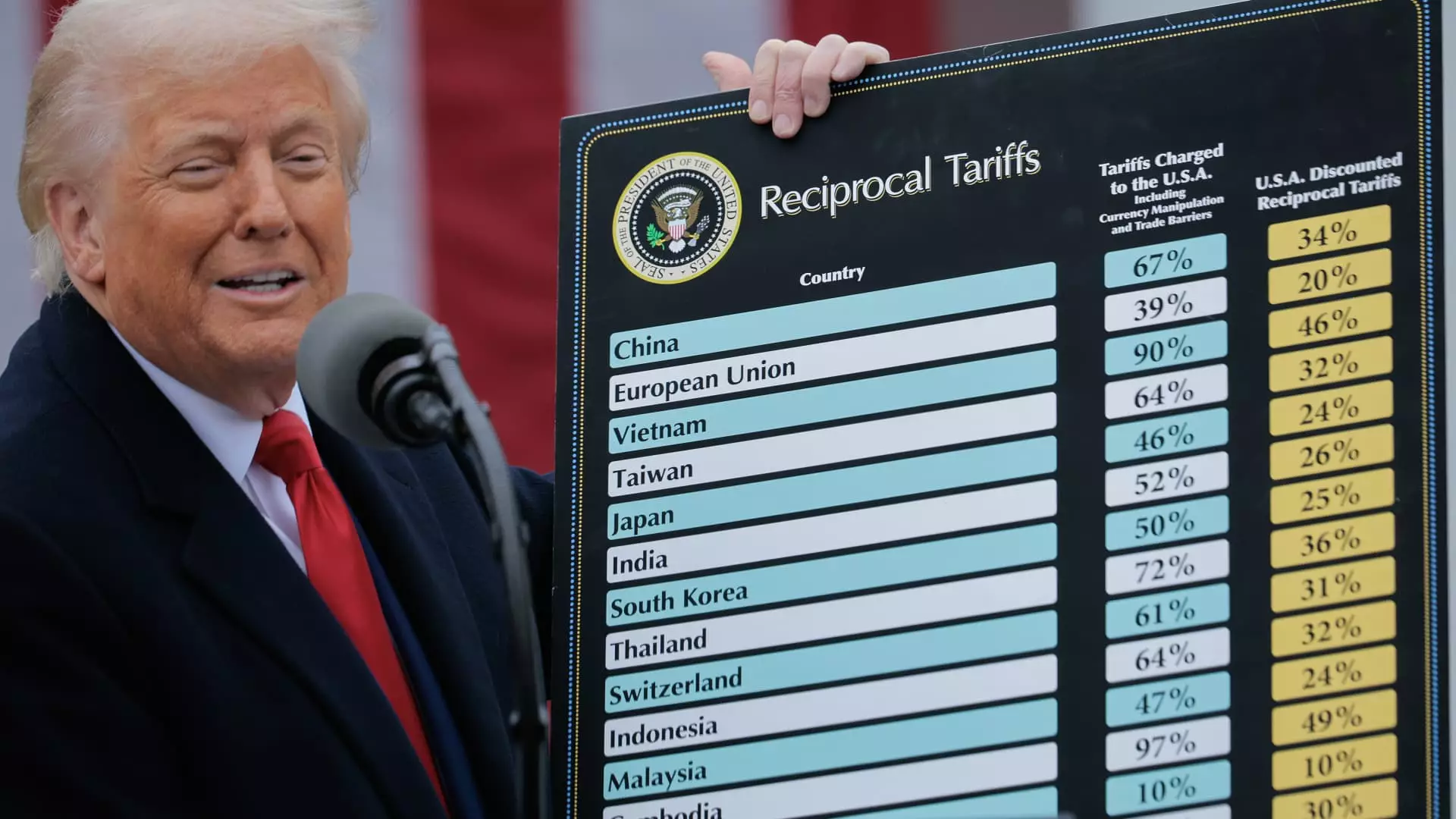The recent announcement by President Donald Trump regarding his “reciprocal” tariff policy sent shockwaves through the economic landscape. With a baseline tariff of 10% poised to blanket nearly every trading partner, the administration’s approach raises critical questions about the validity and reasoning behind such a sweeping move. Economists and trade partners alike are left scrambling to decipher how these rates were computed, revealing a chilling pattern of misinformation that feeds into a larger narrative of economic isolationism.
Questionable Calculations and Misleading Data
At the forefront of this debate is the poster board Trump brandished in the Rose Garden, a calculated display of numbers that suggested rampant tariff abuse by nations like China and India. The administration proclaimed a staggering tariff of 67% imposed by China, a claim that swiftly unraveled under scrutiny. The Cato Institute’s findings—indicating an actual trade-weighted average tariff of a mere 3%—paint a starkly different picture, suggesting that the administration not only misrepresented facts but engaged in a troubling game of economic theatrics.
Moreover, the process of arriving at these numbers raises eyebrows. By apparently dividing trade deficits by imports, the Trump team overlooks critical dynamics of international trade, especially the significance of services. Such a narrow perspective risks oversimplifying complex economic interactions, and it highlights an alarming tendency to use selective statistics to bolster a political agenda rather than address real trade imbalances comprehensively.
Unpacking the Psychological War on Trade Partners
Beyond the economic implications, Trump’s tariff policy seems to embody a psychological warfare tactic against global partners. By framing nations as culprits of unfair trade practices, he crafts a narrative of victimhood for the United States, stoking nationalist sentiments. However, this approach backfires, as it hampers constructive dialogue and undermines the potential for cooperative trade agreements. Instead of fostering alliances, the administration’s aggressive posture cultivates animosity and distrust, pushing countries towards protective measures of their own.
The overwhelming response from economists, analysts, and even his own party members underscores the potential long-term drawbacks of this isolationist strategy. An undeniable ripple effect may lead to retaliation, igniting trade wars that could ultimately hurt American consumers and industries. This reckless pursuit of short-term gains echoes a sentiment of disillusionment that further alienates the U.S. from its historical role as a leader in global commerce.
The Repercussions for Everyday Americans
While the rhetoric may appeal to certain voter bases, it’s essential to consider how these tariffs will impact the everyday American. Increased costs on goods due to higher tariffs will not simply be absorbed by companies; they will be passed down to consumers. The illusion of nationalism masked by protective economic policies raises an important point about the disconnect between campaigning on isolationism and the practical realities facing average households.
Ultimately, the current approach to tariffs under Trump’s administration not only stands on shaky ground in terms of factual accuracy but also threatens to destabilize the economic prospects of many Americans. As the reality of these policies penetrates broader societal layers, the question will remain: will the quest for retribution in trade ultimately harm the very people it was meant to protect?

